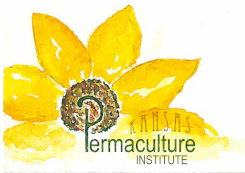Notes from a talk at Nebraska Sustainable Agriculture Society, January 29, 2016.
- Haviland Earth Regeneration wants this century to be known for creating topsoil, and for recognizing food as medicine.
- 90% of the human body is microbial (by cell count), but we know more about the stars than about microbes.
- Got interested in urban agriculture due to the food desert in her father's neighborhood, but was struck by erosion and monocultures in rural areas, realized these are also food deserts.
- Met Dr. Elaine Ingham at Maharishi University of Management, led an effort to regenerate the compacted soil in the MUM greenhouses with manure and compost tea.
- Living plants are the foundation (1st trophic level) of the soil food web. They microherd the rest of the biome.
- When plants need nitrogen, they exude sugar to cultivate selected bacteria (2nd trophic level), which have a C:N ratio of 1:5, like little "fertilizer bags." Plants can't do this in sterile soil, though; they need a diversity of microbes to select from, plus a diversity of microarthropods (3rd trophic level) to pop the "fertilizer bags" and release the nutrients.
- Only 1% of insects are harmful to humans, and 2% to plants.
- Diseases are opportunistic, so antibiotics and fungicides increase the risk of infection by removing the protective microbes.
- Higher trophic levels (4+) act to transport microbes to new habitats. Red wigglers are nature's compost tea brewers.
- When nutrients are mineralized (made soluble), they are attached to salts, by definition.
- The bacterial:fungal ratio sets the stage for different plants. The nitrate:ammonia ratio in soil reflects the bacterial:fungal ratio when comparing stages of ecological succession.
- Basics of microherding: No bare soil. Test the soil biology as well as chemistry. Also test your inoculants and equipment.
- Fall application of compost is ideal.
- Compost extract is not for foliar application; use aerobically brewed compost tea for that.
- Log in to post comments




